Do you have a question about the Olympus D595 - 5MP Digital Camera and is the answer not in the manual?
Explains how to switch between shooting and playback modes using power and mode buttons.
Describes the function of the mode dial for selecting shooting modes like Program Auto, Scene, and Manual.
Details how specific buttons (flash, zoom, exposure compensation) function in shooting and playback modes.
Explains how to access and navigate the camera's menu system for various settings.
Offers advice on camera handling to prevent blur, especially during shooting.
Compares the advantages and disadvantages of using the LCD screen versus the viewfinder for shooting.
Explains how to use focus lock (AE/AF lock) when automatic focus is difficult.
Describes how to select image recording modes (size and compression) for different uses like printing or web.
Details how photos are saved to internal memory or an optional xD-Picture Card.
Explains how to use an optional xD-Picture Card for storing images, including insertion.
Guides users on selecting shooting modes based on various scenarios like Portrait, Landscape, or Night.
Explains how to use optical and digital zoom to magnify subjects, noting quality differences.
Details how to use close-up modes for macro photography, allowing faster focus.
Covers different flash modes (Auto, Red-eye reduction, Fill-in, Off) for various lighting conditions.
Explains how to adjust exposure compensation to fine-tune image brightness for better results.
Guides users on manually adjusting aperture and shutter speed for creative control.
Explains how ISO sensitivity affects image quality in low light, balancing noise and brightness.
Details how to adjust white balance settings to ensure natural color reproduction under different lighting.
Explains how to record videos, including sound, and manage recording time and space.
Describes how to capture multiple shots sequentially for action photography.
Explains how to use the self-timer for group photos or self-portraits.
Covers special shooting functions for Black & White, Sepia tones, or enhanced color saturation.
Guides users on capturing sequential images to create panoramic photos using software.
Explains how to combine two photos into a single image for creative effects.
Details how to record audio clips along with still photos for added context.
Explains how to activate noise reduction to improve image clarity in low light, at the cost of processing time.
Explains how to view individual photos, zoom in, or browse through an index of images.
Describes how to set up and view a slideshow of stored images automatically.
Covers how to play back recorded videos, including controls for playback and frame-by-frame viewing.
Details various image editing functions like adding frames, converting to B&W/Sepia, or resizing.
Explains how to create video indexes and edit video clips.
Guides users on connecting the camera to a TV to view photos and videos on a larger screen.
Explains how to protect important photos from accidental deletion.
Describes how to copy images from the camera's internal memory to an external memory card.
Covers how to delete individual photos or all photos from the camera's memory.
Explains how to format the memory card or internal memory, preparing it for data reception.
Explains how to restore camera settings to factory defaults or retain current settings after power off.
Details how to select the preferred language for the camera's menus and messages.
Guides users on customizing the startup screen or sound when turning on the camera.
Explains how to adjust the brightness of the LCD screen for better visibility.
Details how to set the camera's date and time, which is embedded in photo data.
Guides users on printing photos directly to a PictBridge-compatible printer using a USB cable.
Provides troubleshooting steps for common error messages encountered during printing.
Explains how to use DPOF (Digital Print Order Format) to set print preferences and quantities.
Outlines the steps for connecting the camera to a computer and transferring images using OLYMPUS Master.
Introduces the OLYMPUS Master software and its capabilities for managing photos.
Provides system requirements and step-by-step instructions for installing the OLYMPUS Master software.
Explains how to transfer and save images from the camera to a computer using the software.
Details the safe procedure for disconnecting the camera from the computer after data transfer.
Guides users on how to view still images and videos transferred to the computer via OLYMPUS Master.
Describes how to transfer images to a computer directly using a USB cable without the OLYMPUS Master software.
Offers solutions for common operational problems and error messages encountered with the camera.
Provides instructions for cleaning the camera body, lens, and screen to ensure proper operation.
Explains the use and benefits of the optional AC adapter for continuous power supply.
Details crucial safety guidelines for using the camera in various environments and handling batteries.
Defines technical terms and camera functions used throughout the manual for better understanding.
Provides a detailed list of all menu options available for shooting and display modes.
Outlines the default factory settings for various camera functions and modes.
A comparative table showing the availability of functions across different shooting modes.
Identifies and illustrates the physical parts of the camera for easy reference.
Explains the meaning and function of various icons and indicators displayed on the camera's LCD screen.
| Brand | Olympus |
|---|---|
| Model | D595 - 5MP Digital Camera |
| Category | Digital Camera |
| Language | English |
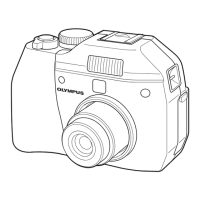
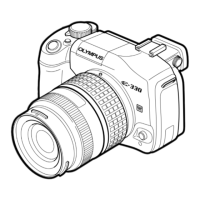


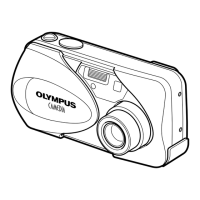


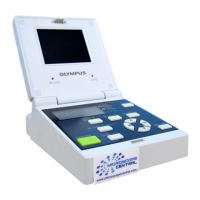

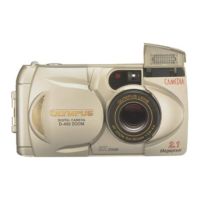
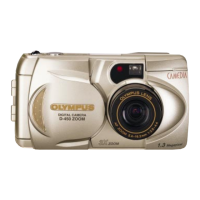

